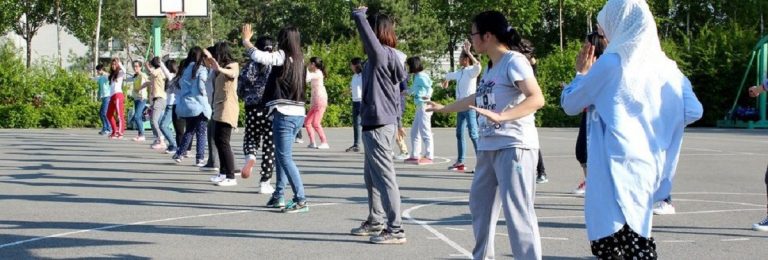
When Saudi Arabia announced in July that beginning the 2018 academic year, school girls in the ultraconservative kingdom would finally be given physical education training, the landmark decision grabbed headlines everywhere.
The move was applauded by rights advocates the world over as it signalled a marked shift in the strict Islamic country’s often-criticised guardianship system for women.
But apart from the obvious issue of gender rights, the decision was also an acknowledgement of the crucial role physical education plays in the health and development of children and youths.
We don’t need the experts to tell us that a good mix of exercise and healthy eating can help stave off diseases like diabetes and some cancers, as well as heart disease and obesity. There’s also plenty of evidence that point to the importance of beginning effective physical education early on, with observational research suggesting that an active child is physically healthier than an inactive one.

Malaysian children practising netball with their preschool teacher in a school in Pahang, Malaysia. Source: Shutterstock
And the easiest way to get a child active is, of course, through schools. But what exactly constitutes healthy physical activity?
While a large part of physical education for children naturally centres around physical activities like sport and physical movement, there is also a push to ensure young people are given a rounded understanding of physical education, so they can develop “health literacy”.
A key aspect of this understanding is highlighting the link between physical activity and cognitive function, as well as mental health.
The thinking behind the concept of health literacy stems from research that links increased physical activity to better academic results in schools and well-developed social and problem-solving abilities. This also leaves children and young people better equipped to function in society as they enter adulthood.
However, despite the wealth of information on the health benefits of physical activity and education, the World Health Organisation (WHO) estimates that globally, 81 percent of school-attending adolescents (11 to 17 years old) are not active enough. This means they do not meet the WHO recommendation of 60 minutes per day of moderate-intensity exercise. This is in comparison to 23 percent of adults globally, who do not meet the WHO target of 150 minutes of moderate-intensity exercise per week.
The WHO cites factors such as a lack of parks and recreational centres around the world, as well as air pollution and a fear of being unsafe in public, for the low figure.
Increased access to technology globally is also a factor, with governments such as Australia recommending that children aged 5 to 12 years not be allowed to spend more than two hours using electronic media.
Day 2 of @stemkidsnj "Let Off Some STEAM Afterschool" where students deconstructed their gadgets. #engineeringis4all pic.twitter.com/KJtdogliie
— STEM Kids NYC (@stemkidsnyc) September 29, 2017
A lack of adequate exercise puts children and young people at risk of missing out on crucial physical development such as bone function and muscular and cardiovascular fitness. On top of that, a sedentary lifestyle could also put the child at greater risk of mental health issues such as depression and anxiety disorders, especially during stressful academic periods of their education.
But despite these seemingly negative statistics, there is hope, as schools and governments begin to experiment with new programmes and curriculum structures, such as the one recommended in the UK as part of its childhood obesity strategy.
Using evidence that points to a more active classroom leading to increased motivation and enjoyment of lessons, the approach essentially recommends that schools provide at least 30 minutes of activity during the school day.
As the outcomes of these concepts become clearer, parents, schools and governments alike may be able to further highlight the importance of an adequate physical education for children and young people, for their long-term health.







